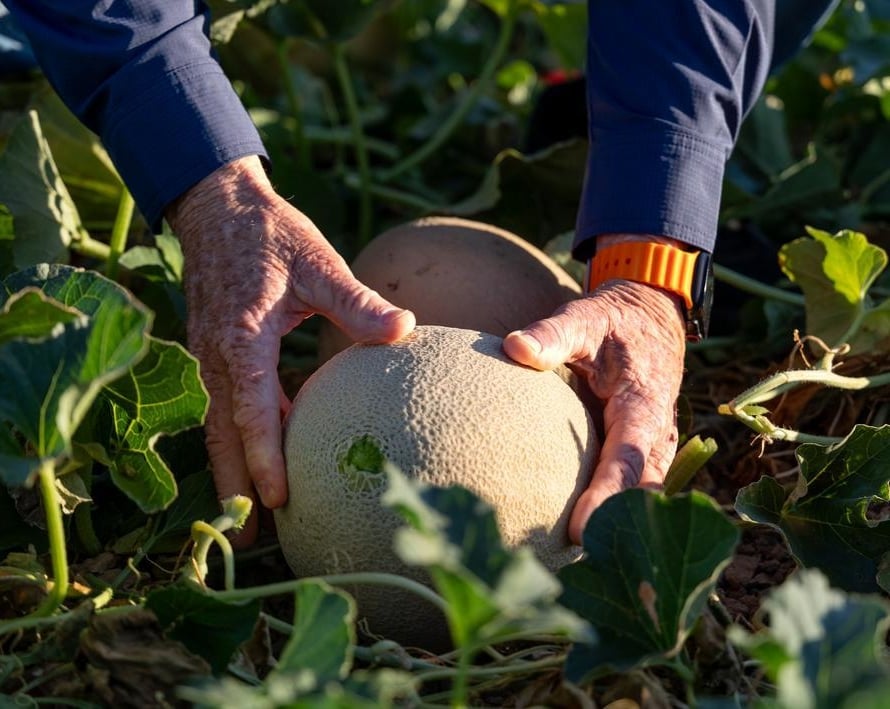How Cantaloupes Grow in California: From Farm to Table

California farmers are responsible for over 75% of all cantaloupes grown in the United States! We met with Garrett Patricio of Westside Produce to learn more about how cantaloupes grow in the Golden State.
It starts with a seed
In California, cantaloupes are planted nine months a year – from January through September. Garrett admits, “I know that’s a long window of time, but you have to understand that it’s a big state!” He attributes the unusually long growing season to the state’s diverse climates. Planting begins in January in the Imperial Valley, where warm soil temperatures and sandy soils allow cantaloupe to ripen much earlier than the rest of the state. In the Central Valley, farmers begin to plant cantaloupes in March for an early summer harvest.
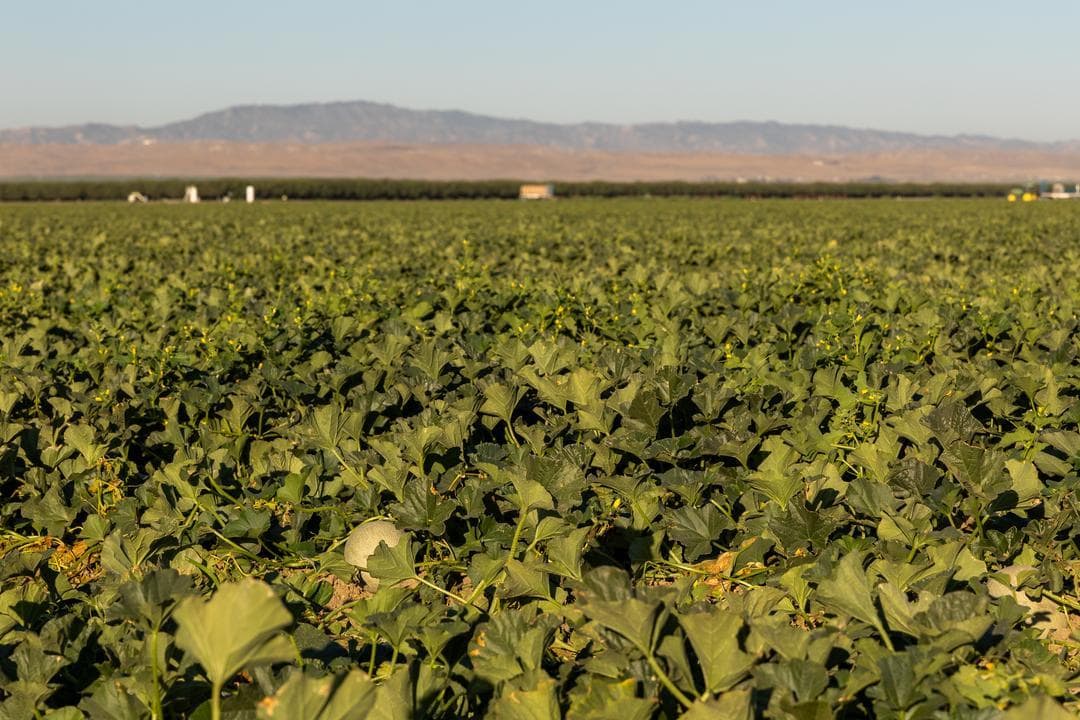
In California, farmers grow cantaloupe plants from seed. The cantaloupe seeds are run through a planter that optimizes spacing throughout the rows. The seeds are planted in full sun, about 12 to 14 inches apart, to allow for good air circulation and to reduce the risk of fungal diseases. In about a week, the seeds will germinate and cantaloupe seedlings will begin to sprout from the soil.
Once the seed sprouts, growers keep a close eye on the melon seedlings. At this stage, growers’ main priorities are proper watering and effective weed control. In California, farmers typically use drip irrigation to deliver precise amounts of water directly to the base of the plant. Because weeds compete with the young melon plants for nutrients, farmers use a combination of handweeding, cultivation and layby sprays to give the plant the best opportunity to thrive.
Do cantaloupes need bees for pollination?
Like many crops, cantaloupes require bees to assist in pollination. A little over a month after planting, the cantaloupe vines will begin to flower. Cantaloupe vines produce both male and female flowers, but are not self-pollinating. Like many crops, cantaloupes require bees to assist in pollination.
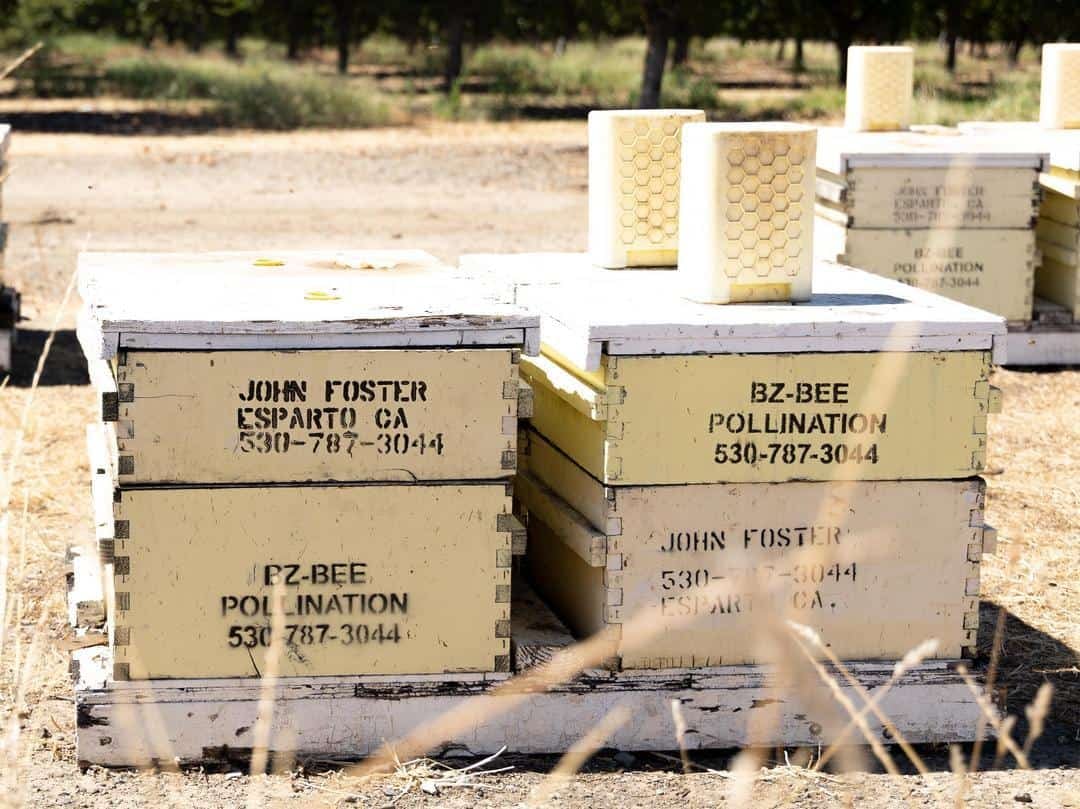
Garrett explains, “We typically lay out about a hive and a half per acre, and the bees do all of the dirty work – nothing pollinates itself in the melon business. We rely heavily on that bee pollination.” Successful pollination leads to fruit set, and higher rates of fruit set translate to increased yields.
Good to grow
Once fruit set occurs, warm temperatures typically encourage the cantaloupe fruit to grow rapidly. Garrett notes, “It (the cantaloupe fruit) starts the size of your thumbnail, and it will keep growing until it’s the size of a bowling ball. That happens in about 45 days!”
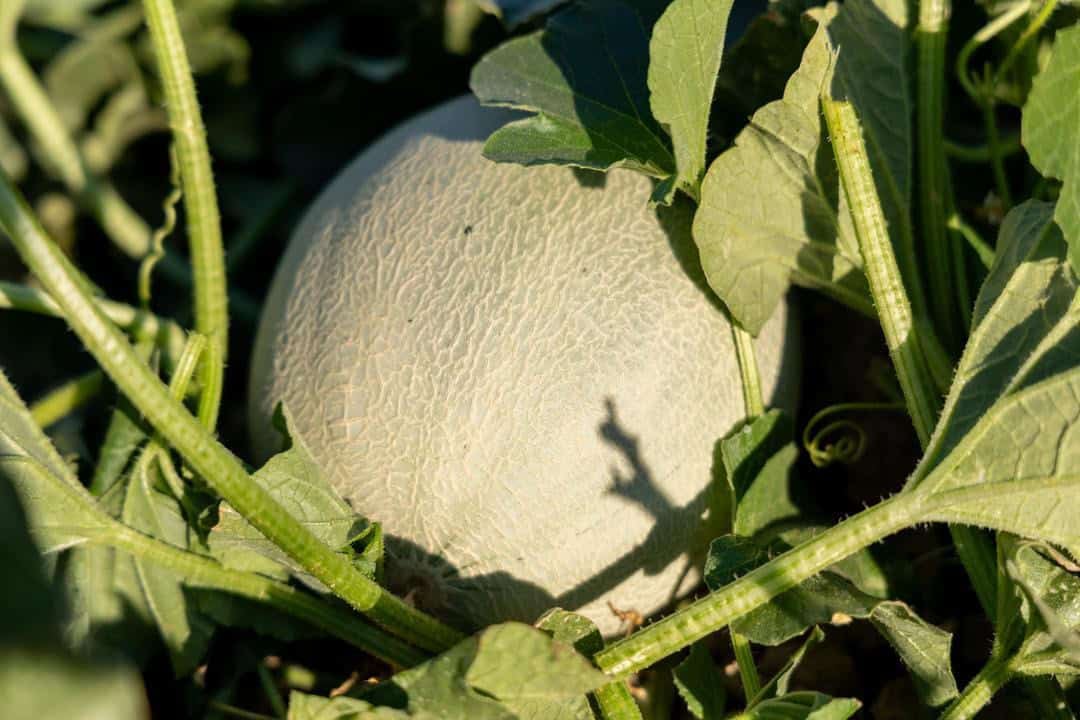
From this point on, the exact timeline – and quality of the fruit – is up to Mother Nature and good luck. Garrett emphasizes, “Everything matters. The weather, the soil conditions, whether we get any rain – that plays a larger role in what ultimately makes it to your table.”
How are cantaloupes harvested?
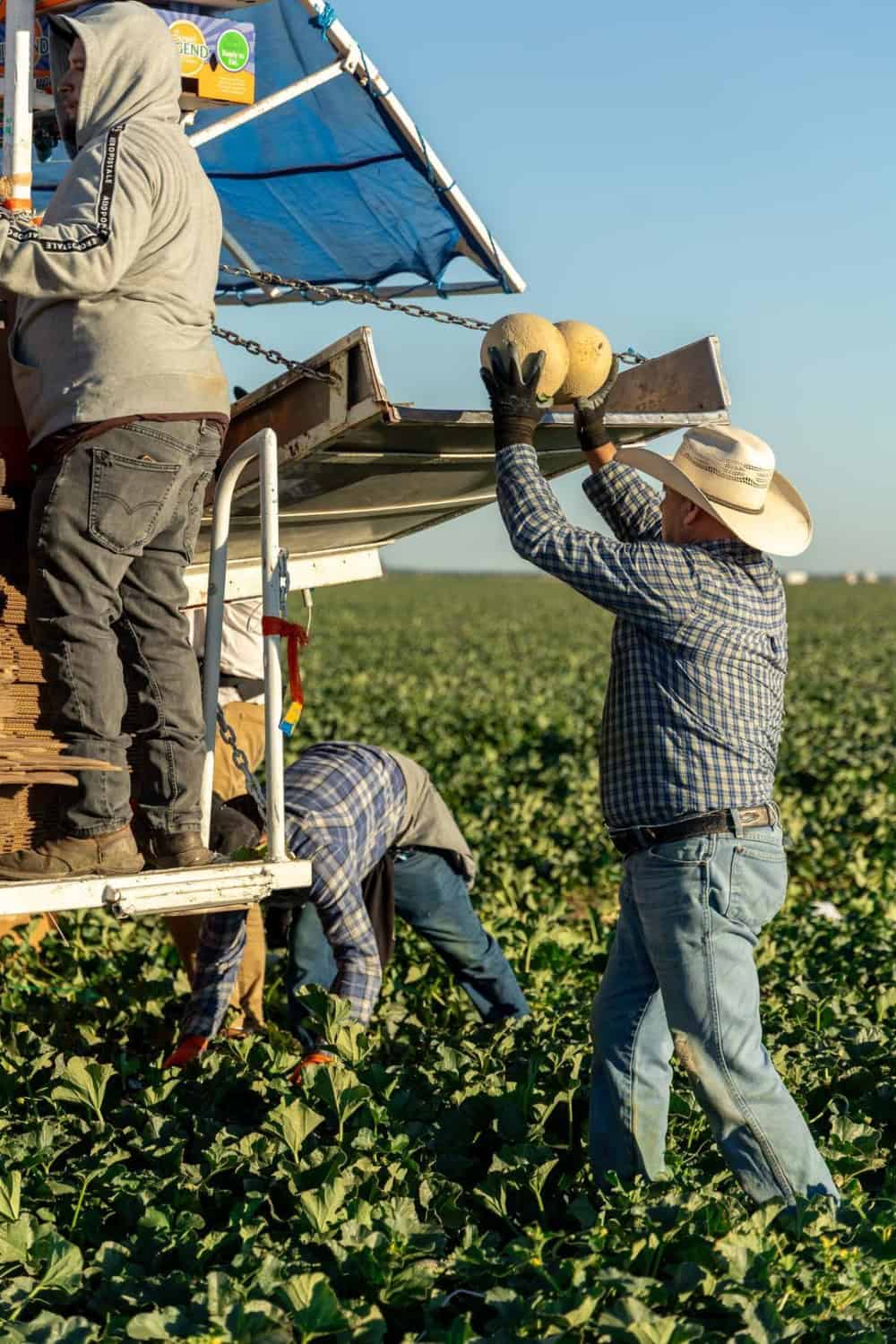
Depending on the weather, cantaloupes are ready to harvest anywhere from 80 to 100 days after planting. In California, cantaloupe harvest takes place from April in the warmer climates, through October in the northernmost fields. Before harvest, farmers send a team to evaluate the field. Garrett explains how the team will determine whether a field is ready to harvest: “Our pickers in the field are typically looking for the netting growing up into the stem end. They’re also looking for external color – a musky tan color as opposed to a really dark green color. They’re looking for a soft blossom or some slight cracking on the blossom; that usually means that the fruit’s mature and ready to push itself out.”
If 80% of the cantaloupes meet those criteria, harvest begins.
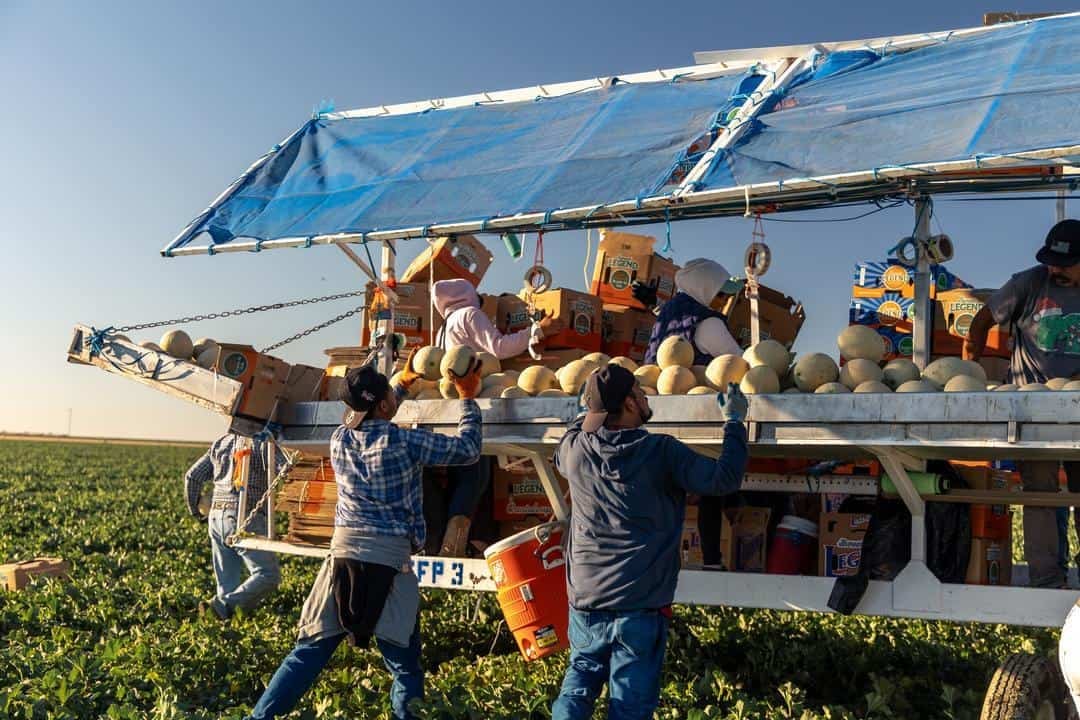
The fruit is field pack harvested – meaning it is picked, palletized, sized and packed in the field. A harvest team uses small knives to cut the cantaloupe from the vine, although a few varieties, like Origami Cantaloupe, are allowed to ripen until they slip from the vine. As the harvest team moves through the field, they load the fruit onto the mobile packing platform, where a second team both sizes and packs the fruit by hand before loading it onto pallets. The pallets are loaded onto a trailer and sent to cold storage.
Do melons need to be washed? In California, melons are not washed or sanitized after harvest, as the wash water would pose more of a food safety issue. Garrett adds, “We believe field pack is the best, safest alternative for the conditions that we grow and pack under.”
Keeping it cool: Cold storage and climate-controlled transportation
After harvest, growers move the cantaloupe to cold storage as quickly as possible. The hot summer sun quickly affects the shelf life of the fruit. Once the cantaloupes are transferred to the cold storage facility, they are force-chilled and then remain in cold storage until they are shipped out to the store in climate-controlled trucks.
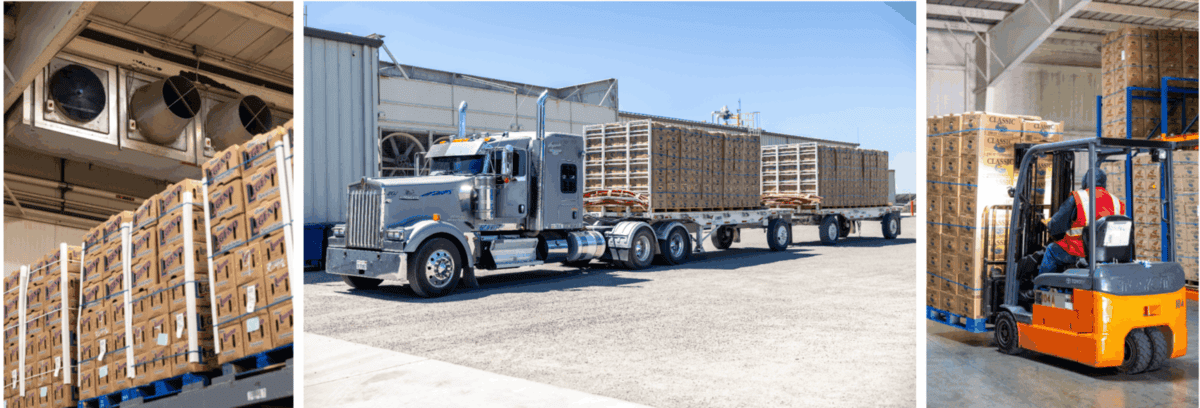
Most California cantaloupe growers aim to ship fruit to retailers within 24 hours of harvest. So, when you choose California cantaloupes, you know you’re selecting the freshest melons available!
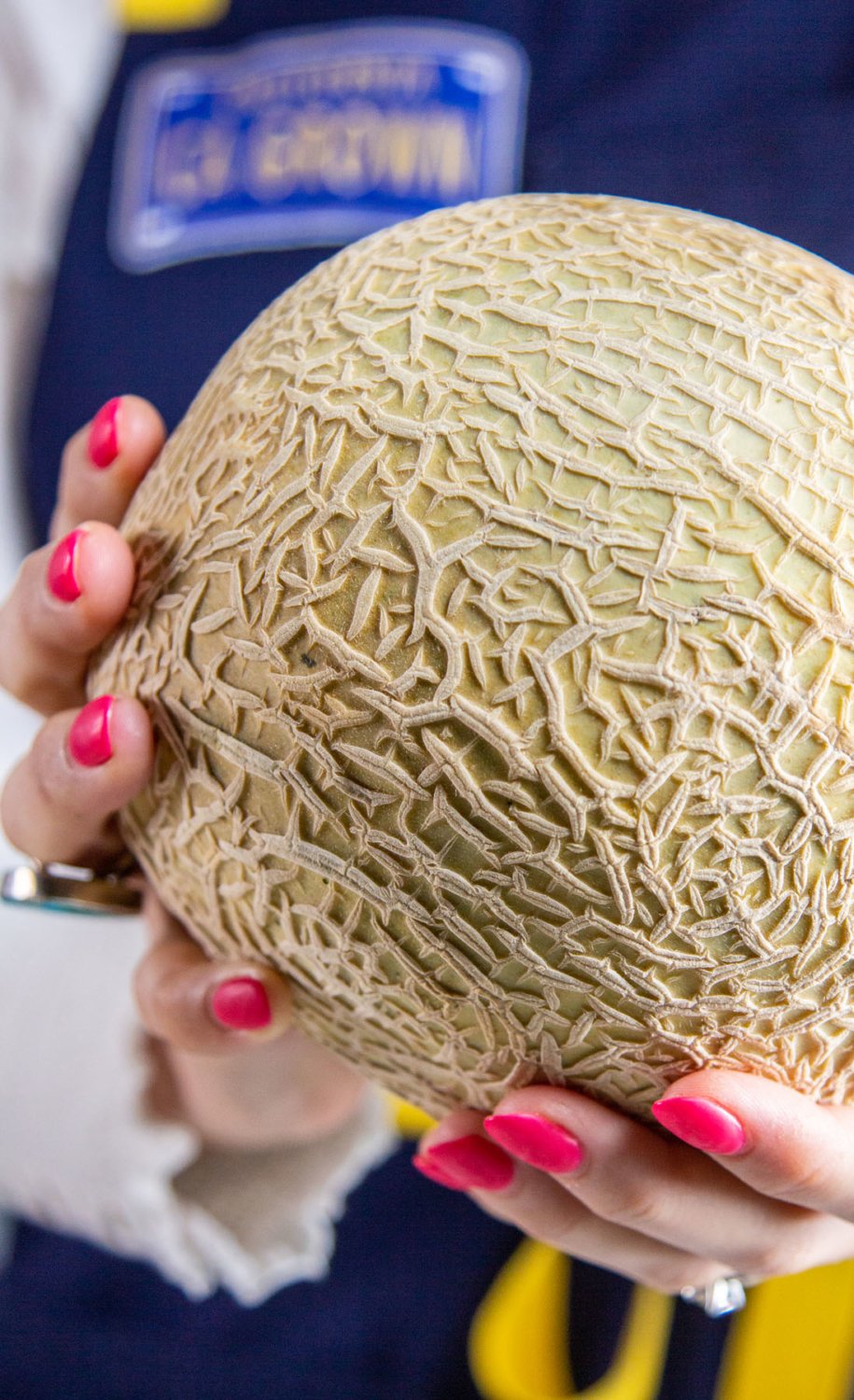
How to tell if your cantaloupes are from California
The easiest way to know if your cantaloupes are from California is to look for the CA GROWN license plate. You might see this on a shelf card, on packaging, or on individual stickers. If you can’t find the CA GROWN license plate, look for a shelf card, sticker or packaging indicating that your cantaloupes were grown in California or the USA. California grows seventy-five percent of the nation’s cantaloupes. So, if your cantaloupe was grown in the USA, there’s a good chance it was grown in the Golden State!
How to pick the perfect melon
Sweet, ripe cantaloupe is a summer treat – but what’s the best way to pick the perfect cantaloupe? Garrett says with a smile, “I get the question about how to pick the perfect melon all the time. Our objective is that every piece of our fruit that ships out should be ready to eat. However, that’s not always the case. So, there are a few good indicators on the store shelf. I always look for a good tan skin color,” he says, referring to the exterior of the melon, “and a little bit of netting on the cantaloupe growing up into the stem. I like to look for a softer blossom end that has a little bit of give in it or is starting to crack a bit. That means that the fruit’s really mature.”
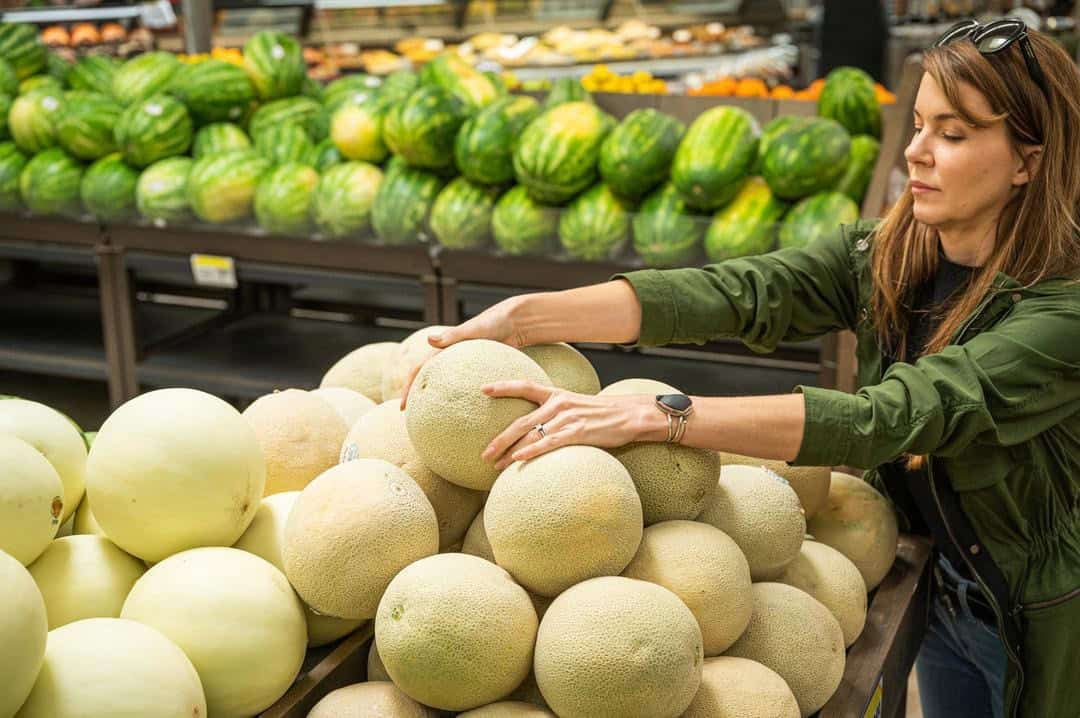
Want to learn more about how to tell if watermelons and honeydew melons are ripe? Here’s everything you need to know.
How long will melons last after you bring them home?
Food waste is an essential issue to California farmers, families and retailers. To help address this issue, California melon farmers have spent years perfecting varieties with the same great flavor but a significantly longer shelf life. In fact, most of the melons you find in stores nowadays will last about a week when stored at room temperature – and up to three weeks when properly refrigerated!
The Best Cantaloupe Recipes


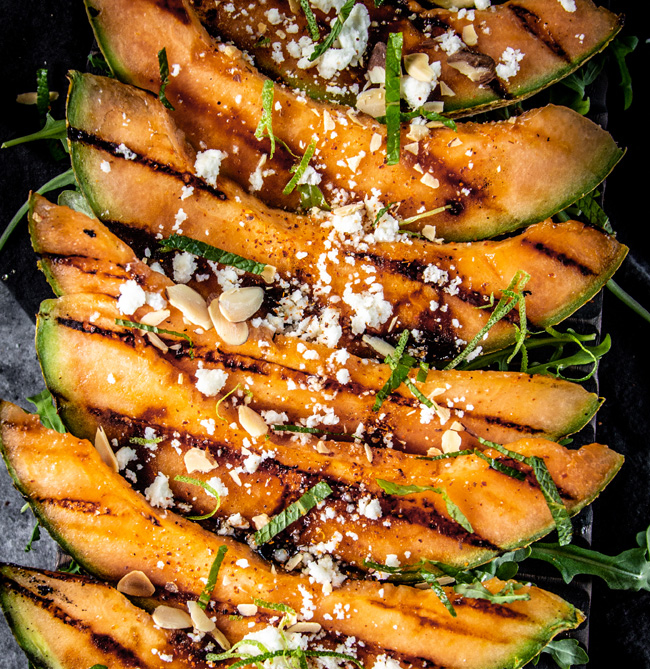



Article by Hilary Rance. Photography by Hilary Rance, James Collier and Meg van der Kruik.

